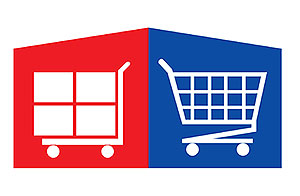
Can Retailers Be Drop Shipping Suppliers?
It is widely assumed that in order for a drop shipping business to be successful and profitable, the stock must be obtained from real wholesalers who are willing to offer the same wholesale pricing for “one off” goods drop shipped on behalf of the retailer as for bulk loads equalling a pallet or even a container load.
While obviously this would be a perfect and a dream scenario, this is actually not how majority of drop-ship reliant businesses operate. So do we really need to seek out wholesalers who drop-ship or can maybe retailers also prove to be a viable drop ship supplier contributing to the success of your online store.
Yes, at first this sounds like a ridiculous ideology. After all, why would other retailers allow you to resell their stock and create more competition within the online marketplace?
Well, let’s explore this further and I will show you that this is not only a viable way for you to profit from the other retailers offerings, but there are also a lot advantages for the retailer who decides to become a drop-shipper, and it’s actually quite a widespread phenomenon in today’s modern eCommerce.
Wholesaler Retailer Differences
Wholesalers and retailers simply operate on different points within the product distribution spectrum. Both of the businesses are important to each other and both operate for the purpose of

Can both Wholesalers & retailers offer Drop-Shipping?
generating profit from the sale of products, pushing them up the distribution chain so that those products can end up on a shelf, then ultimately off the shelf and in the trolley (as to speak).
As both wholesalers and retailers work on a profit margin, both are capable of accommodating a discount structure that may be needed to accommodate extra re-sellers for whom they are able to drop-ship. What most people don’t realise is that retailers are actually better equipped to provide drop shipping services than wholesalers.
This doesn’t necessarily meant that they charge you the full recommended retail markup, they simply pass on a portion of the profit margin in exchange for the possibility of cycling more stock through their books, resulting in higher turnover.
Drop Ship Operation Setup
So what is actually required to become a drop-shipper?
The first and most obvious procedure that has to be implemented is the ability for the purchasing re-seller to be able to specify a third party address where the good are to be shipped to, at the time of placing the order with the drop ship supplier.
Most modern e-commerce shopping carts (content management systems) come with this feature as default. It is simply the shipping address, which may be different from the billing address.
The discounts offered by the retailer, to the re-seller can be done in the form of a coupon code that can be generated and provided to the previously approved re-seller. (Each re-seller can have their own unique coupon code)
Once an order comes through from the retailer’s website that has had the coupon applied, this is a cue for the supplier to address the package according to the shipping address values, and to keep the anonymity, the billing address of the order should be used as the “Sender” value.
While the processes can be a lot more complex for large drop ship suppliers, the above method is all that is really required to get started., and is in fact the prevalent method used among small to medium drop ship operations.
Can All Retailers Be Dropshippers?
In theory all retailers can become dropshippers, but can they all be of value to potential re-sellers?

Drop shipping retail operations
In order for a retailer to become a dropshipper, they must be able to accommodate a sufficient discount structure that they can pass onto their re-sellers. After all, everyone has to be benefit from this exercise, otherwise there is just no point.
The retailers who can pass on a substantial discount for their re-sellers are usually ones who are involved in the importation of the goods and have a direct relationship with the manufacturer. This allows the retailer to have a greater markup (as they skip the wholesaler in the chain of supply who also take a cut of approximately 20%) on the goods that they retail to their customers. The greater markup can be enough to allow the retailer to establish a dropship system and gain valuable re-sellers who ultimately become another distribution channel for the importing retailer.
Implications of Increased Competition
You maybe wondering, why would a retailer allow others to resell their products, give up exclusivity and potentially increase competition of their valued products?
To put it simply, if you spend a substantial amount of your capital on importing certain goods or a certain group/category of goods, you want to have a distribution system in place to be able to move those products quickly and get a return on your investment. There is no point bringing a container of “Widgets” if it will take you 5 years to clear this stock.
This is where dropshipping comes into play, allowing you to instantly gain distributors who are eager to promote and resell your newly landed stock.
Here are some considerations why a retailer who imports their own stock would in fact want to develop extra distribution channels, even if that means losing a bit off their margins.
Instant multiple distribution channels
Container full of” Widgets” lands, gets unpacked shelved and descriptions and images are developed. Re-sellers get notified of the new offering and start to promote it instantly. In a very short

Multi channel distribution through the use of dropshipping
period of time “ Widgets” end up being promoted across multiple websites ready for the end consumers to begin purchasing, ultimately streaming profits profits straight to the main supplier (the importing retailer)
Increased Product Awareness
By having the “Widgets” suddenly available through 5 -10 websites, the products have 5 to 10 times more exposure which translates to product awareness.
Exclusivity on a particular product comes at a price of having to spend enormous amounts on marketing the product. Can you imagine the next “Magic Twisting Mop” being advertised through Danoz Direct only for it’s entire life cycle?
Yes initially it has a wow factor, it is something new, its is heavily advertised through infomercials. People pay a fortune for it knowing they got the “Latest Thing” not really caring that they paid 10 times as much for it as what this same product will be available for in a few months when it trickles down to the discount retailers.
Have you ever purchased something through the infomercials, then seen the same product at the Reject Shop for a tenth of the price you paid for it?
The original importer of those products is not necessarily making any less profits on the items now that they have trickled down to department stores, bargain outlets etc… They are probably selling 10 times more albeit at lower profit margins, but still making good profits.
Drop Shipping goods to a select number of re-sellers is great way to increase product awareness and move the stock quickly.
Increasing the Range through Quicker Returns
Most import orders need to be made in bulk to obtain the best possible pricing. This in most cases needs to be large quantities of the same item. The sooner the importing retailer can clear at least a portion of the stock and free up some of the capital, the sooner they can place further orders and start increasing their range with other goods.
This is how some retailers and importers grow from importing one to two items, and then expand on their range.
Pricing Considerations for Retail Dropshippers
One of the biggest threats for a dropshipping retailer is price deflation forced by competition. Naturally when you give multiple re-sellers access to a particular product line, there is bound to be some competition. Unfortunately the easiest way to compete in retail, is to lower the selling price of your offerings. This can often turn quite ugly as it can continue until the price is so deflated that the products perception changes from being something of great value, to something cheap, which is usually accompanied by the presumption that it is also of low quality. (Cheap & Nasty)
It is quite easy for re-sellers who are using dropshippers to get in a price war. After all, they don’t have any overheads.
In order to make drop shipping work well for all the parties involved,
Drop Shippers need to have clear guidelines on pricing, discounting and limits in the form of a policy or agreement.
The resellers need to abide by those policies and honour the agreements. Failure to do so jeopardises not only the potential profit margins of all re-sellers involved but also the risk of losing the right to resell products on behalf of a supplier and have access to their dropshipping program.
So Can Retailers Be Drop Shipping Suppliers ?
Retailers can definitely be dropshippers. In fact a lot of the current small to medium, dropship operations are run by retailers who also import or who have access to large volume discounts on stock. However rules need to be followed and limits set in order to preserve a healthy dropshipping relationship.

 Enter Here For A Free Preview Of The Largest Global Drop Shipper Index On The Net
Enter Here For A Free Preview Of The Largest Global Drop Shipper Index On The Net









